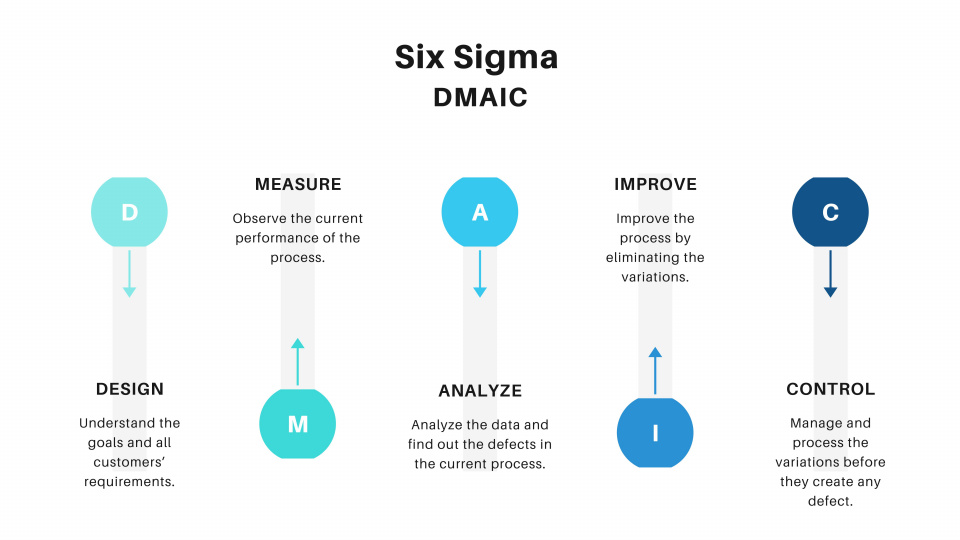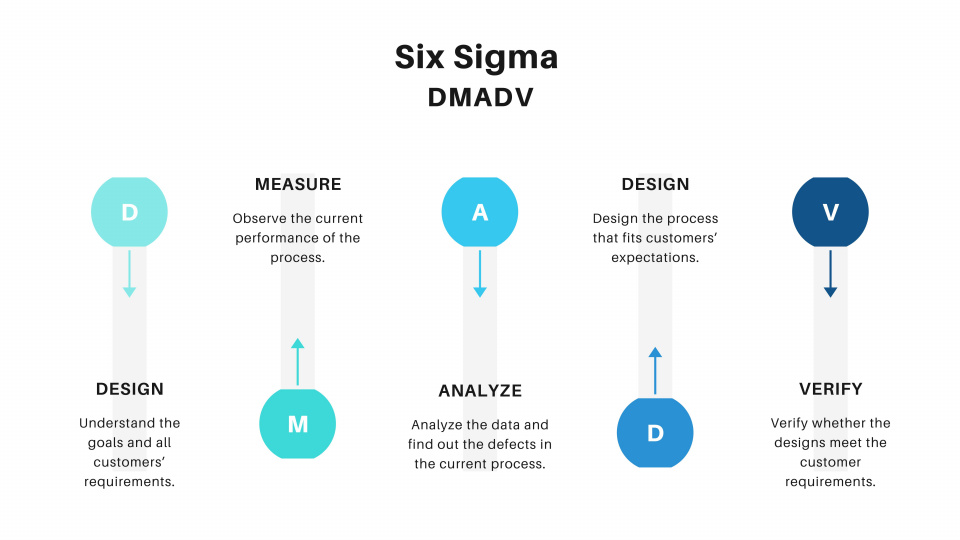How is Six Sigma defined? Many big companies are digitally transforming and new technologies are supporting these companies to transform. In other words, it fast-track the company’s growth.
Six Sigma has a wide range of tools and techniques. With the help of these tools, companies improve their business performance.
Bill Smith who was the Motorola engineer has developed Six Sigma. There were various manufacturing processes that were causing defects in their products. So to reduce the variations in the processes Bill Smith used the Six Sigma techniques.
How is Six Sigma defined? The Process of Six Sigma.
How is Six Sigma defined?
Six Sigma is a set of tools and techniques that measure the errors in the current process and help improve it. In other words, Six Sigma is a process that seeks and eliminates the defects in the current business process. To eliminate the errors in the process Six Sigma use the Statistical analytics technique.
Six Sigma Principles
The 5 key principles of Six Sigma are as follows.
Focus on the Customer:
Companies use the Six Sigma process to improve the quality of the product. However, the quality depends on the customer’s perspective. Companies need to improve the quality of their product as per customers’ needs.
Identifying Root Causes:
Employees need to understand the process first to identify the problems correctly. For instance, create a map of the steps of the process. Gather the data of the process and find the area of the problem. Collect all the data in the process.
Employees collect and define the data, note down the reason behind the data collection. This data will help to achieve the goals. After that, check whether the data is meeting the goals. If the data is not showing accurate results refine the data and collect additional information.
After that, observe the data process and ask questions to find out the answers to problems. Improve the process after finding the root errors in the process.
Eliminate Variation:
After the root cause is found in the process. Six Sigma makes the changes in the process in order to eliminate the variation. Similarly, remove the activities from the process that do not add value to the customers. Collect the data, talk to people to gather additional information, and study the data to find the variations in the process.
Teamwork:
Teamwork makes the process easier. The six sigma process includes the involvement of teams that can take responsibility for the process. The team needs to understand the process of Six Sigma methodology. Similarly, the team must also seek knowledge of various tools and techniques of Six Sigma.
To understand the problem they should have the communication skills to communicate with workers as well as the customers. People from the different processes must form a team that will help to spot the variations in a particular process.
Flexible and Responsive Ecosystem:
After we detect the error in the process, the process undergoes some changes to improve the quality. Employees should accept the changes made in the process. In addition, explain the changes step by step to the employees and tell the benefits of the new process. They should design the process for quick and easy adoption.
A flexible environment is required to adopt the change. In other words, the changed process should not be complicated for the employees to understand.
The Six Sigma Methodology
There is two main Six Sigma methodology. Each methodology is different and has a unique set of procedures. However, depending on the business processes and setting the methodology is used.
Six Sigma DMAIC
Organizations use the Six Sigma DMAIC methodology to make changes and improve the process that already exists. DMAIC is the acronym for.

Six Sigma DMADV
The Six Sigma DMADV methodology is used to design or create a new process. It is also known as DFSS (Design For Six Sigma). DMADV is the acronym for.

Quality Management Tools of Six Sigma
Businesses use various tools to improve the quality of the process with the help of Six Sigma.
VSM:
VSM stands for Visual Stream Mapping. They are flowcharts of Map representation of the business processes. In other words, employees use Visual Stream Mapping to understand every block of the process and find out the potential errors. It is different from standard flowcharts. It uses 2 main factors that affect the process, the internal i.e the employees of the companies, and the external i.e the customers. VSM makes it easier to find out the root cause and errors in the process by mapping it out.
Capability Analysis:
Businesses use this tool to observe the capabilities of the process to meet customers’ requirements. In other words, this tool helps businesses to determine the relationship between the current process and the customers’ requirements. Businesses use this tool to make a customer-focused process.
Five Whys:
Sometimes, businesses only consider the surface-level issues and temporarily resolve the problem. It is not considered a good practice. We must observe and fix the root cause of any problem. To identify the root problem the tool allows workers or employees to ask “why” to the process. The actual number of questions depends upon the process. It can be greater or less than five.
PDCA:
It stands for Plan-Do-Check-Act that solves the problems using these four steps. When the employees detect the root cause, this tool creates a systematic solution for the problem, tests the solution, reviews the outcome of the results, and finally implements the solutions.
SPC:
SPC stands for Statistical Process Control. After the business implements the new process, we need to monitor the performance of the process. SPC tool is a quality control tool that monitors the new process. Control Chart is a common way to implement the SPC tool. It records every movement of the process and collects the information when the process stops working.
Conclusion
Digital transformation has become a popular word in this decade. New technologies are helping the business to transform and grow in this competitive environment. Six Sigma is improving business productivity by identifying the problems in their process and also eliminating the defects.
The business that has implemented Six Sigma techniques claims to have benefits like better understanding the customer requirements, delivering more reliable products and services.

